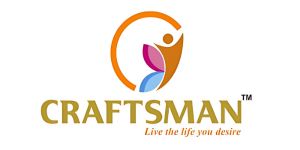Rhinoplasty
Rhinoplasty in Mumbai
The surgical treatment known as rhinoplasty, sometimes referred to as nasal reshaping or a “nose job,” is intended to enhance the nose’s beauty, functionality, or both. This procedure can enhance facial harmony, improve breathing, and correct structural defects, making it both an aesthetic and functional choice for many individuals.
What is Rhinoplasty?
Rhinoplasty involves the surgical restructuring of nasal bone, cartilage, and soft tissues to create a balanced nose shape and improve airflow. It can address various concerns such as a prominent hump, nasal asymmetry, a drooping or bulbous tip, or breathing issues due to structural abnormalities. With rhinoplasty, patients can achieve a natural, long-lasting enhancement that complements their facial features.
- Customisable Results: Each rhinoplasty is tailored to suit the individual’s facial structure and goals, delivering a natural-looking result.
- Functional and Aesthetic Improvements: Rhinoplasty can resolve breathing issues, correct congenital defects, and enhance facial symmetry.
- Long-Lasting Changes Rhinoplasty reshapes the nasal structure, providing permanent improvements to appearance and functionality.
Types of Rhinoplasty Techniques
- Closed Rhinoplasty Incisions are placed inside the nostrils, making them invisible, ideal for less extensive reshaping.
- Open Rhinoplasty A small incision is made at the base of the columella (the tissue between the nostrils) to provide greater access for more complex adjustments.
- Functional Rhinoplasty Performed to correct breathing problems, typically addressing issues like a deviated septum or nasal valve collapse.
- Revision Rhinoplasty A secondary procedure for patients who seek additional corrections or adjustments after an initial rhinoplasty.
Who is a Suitable Candidate?
Ideal candidates for rhinoplasty are
- Mature in Facial Growth Generally aged 16 or older for females and 18 or older for males, once nasal growth is complete.
- Healthy Those who don’t smoke and don’t have any illnesses that hinder their ability to recover.
- Having Realistic Goals Those with clear, achievable expectations for structural or aesthetic changes.
- Facing Breathing or Structural Concerns: Patients looking to correct nasal issues affecting their ability to breathe or seeking cosmetic enhancement.
Benefits of Rhinoplasty
- Balances facial features and improves nasal symmetry
- Enhances breathing by addressing structural obstructions
- Provides increased confidence with a refined nose shape
- Delivers long-lasting results with comprehensive nasal improvements
What to Expect During the Procedure
Under either local anaesthesia with sedation or general anaesthesia, a rhinoplasty procedure usually takes one to three hours. The steps involved include
- Incision Placement Based on the technique chosen, incisions are made within the nostrils or on the columella.
- Reshaping To get the desired look and functional enhancement, the surgeon modifies bone and cartilage.
- Closure Once reshaping is complete, incisions are closed, and a nasal splint may be applied to support the healing process.
Recovery and Aftercare
- Swelling and Bruising Expect mild to moderate swelling and bruising around the nose and under the eyes, typically subsiding over a few weeks.
- Avoid Strenuous Activities Limit physical activities for at least 4 weeks to promote healing.
- Follow-Up Visits Attend follow-up appointments to monitor healing and ensure optimal results.
When to Expect Final Results
Swelling should subside significantly within 1-2 weeks, revealing noticeable improvement, with final results settling over 2-3 months as residual swelling disappears.
Schedule Your One-on-One Session
View More Services

